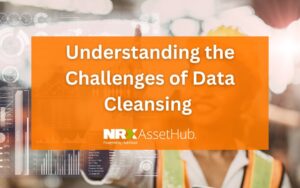Data migration is a critical process that involves transferring data from one system or storage environment to another. Whether it’s migrating to a new software application, transitioning to a cloud-based solution, or consolidating data from multiple sources, careful planning is essential for a successful and seamless data migration. In this blog, we will explore the key steps and considerations involved in planning for a smooth data migration.

Define Migration Goals and Objectives
Before embarking on a data migration project, it’s crucial to define clear goals and objectives. Determine the specific reasons for the migration, such as system upgrades, operational efficiencies, or regulatory compliance. Outline the desired outcomes, such as improved data quality, enhanced accessibility, or cost savings. Clearly defining your goals will guide the entire planning and execution process.
Assess and Analyze Existing Data
Conduct a thorough assessment and analysis of your existing data. Understand the structure, format, and quality of the data to identify any potential challenges or data cleansing requirements. Consider the volume of data, data relationships, and dependencies. Assess data ownership, security, and privacy considerations. This analysis will help you develop an effective migration strategy.
Develop a Data Migration Strategy
Based on your goals and data analysis, develop a comprehensive data migration strategy. Consider the following key elements:
- Mapping and Transformation: Define the mapping between source and target systems to ensure data consistency and accuracy during migration. Determine if any data transformation or cleansing is required to align with the new system’s requirements.
- Data Validation: Establish data validation criteria and procedures to verify the integrity and accuracy of migrated data. Define validation checkpoints and metrics to ensure data quality throughout the migration process.
- Migration Phases and Prioritization: Break down the migration process into phases based on data dependencies, complexity, and criticality. Prioritize data sets or modules for migration based on their business impact, ensuring essential functionalities are not disrupted.
- Data Backup and Rollback Plan: Implement a robust backup strategy to ensure data integrity during the migration. Develop a rollback plan in case any issues or errors occur, allowing you to revert to the previous system without losing critical data.
Communication and Stakeholder Engagement
Effective communication and stakeholder engagement are vital for a successful data migration. Engage all relevant stakeholders, including IT teams, end-users, data owners, and management. Clearly communicate the migration plan, timeline, and potential impacts on daily operations. Address any concerns or questions, and ensure that everyone understands their roles and responsibilities throughout the migration process.
Test, Validate, and Train
Thorough testing is crucial before migrating data to the target system. Develop test scenarios and conduct data migration simulations to identify and rectify any issues. Validate the migrated data against the defined validation criteria to ensure accuracy and completeness. Additionally, provide comprehensive training to end-users on the new system and processes to facilitate a smooth transition.
Monitor and Evaluate
Once the data migration is complete, closely monitor the system’s performance and data integrity. Conduct post-migration evaluations to assess the success of the migration against defined goals and objectives. Seek feedback from end-users and address any issues promptly. Continuously monitor data quality and make necessary adjustments to maintain a high level of data integrity.

Planning for a seamless data migration is crucial for ensuring a smooth transition and minimizing disruptions to daily operations. By following these key steps and considerations, organizations can effectively plan and execute data migration projects, achieving their desired outcomes and maximizing the benefits of the new system. With careful planning, clear communication, and thorough testing, organizations can confidently migrate their data while maintaining data integrity and ensuring business continuity.
Looking to Migrate your Data?
HubHead’s benchmarking service can provide valuable support. Our experienced consultants have helped numerous companies achieve excellence through comprehensive benchmarking analysis that leverages various benchmark types.
Contact us today by following the links below to download our brochure or book a meeting with one of our consultants.

Refining Maintenance Processes in the Oil & Gas Industry
Understanding the Challenges of Data Cleansing
5 Best Practices for Effective Data Cleansing
Share this article




